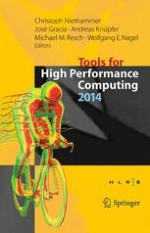Numerical simulation and modelling using High Performance Computing has evolved into an established technique in academic and industrial research. At the same time, the High Performance Computing infrastructure is becoming ever more complex. For instance, most of the current top systems around the world use thousands of nodes in which classical CPUs are combined with accelerator cards in order to enhance their compute power and energy efficiency. This complexity can only be mastered with adequate development and optimization tools. Key topics addressed by these tools include parallelization on heterogeneous systems, performance optimization for CPUs and accelerators, debugging of increasingly complex scientific applications and optimization of energy usage in the spirit of green IT. This book represents the proceedings of the 8th International Parallel Tools Workshop, held October 1-2, 2014 in Stuttgart, Germany – which is a forum to discuss the latest advancements in the parallel tools.
